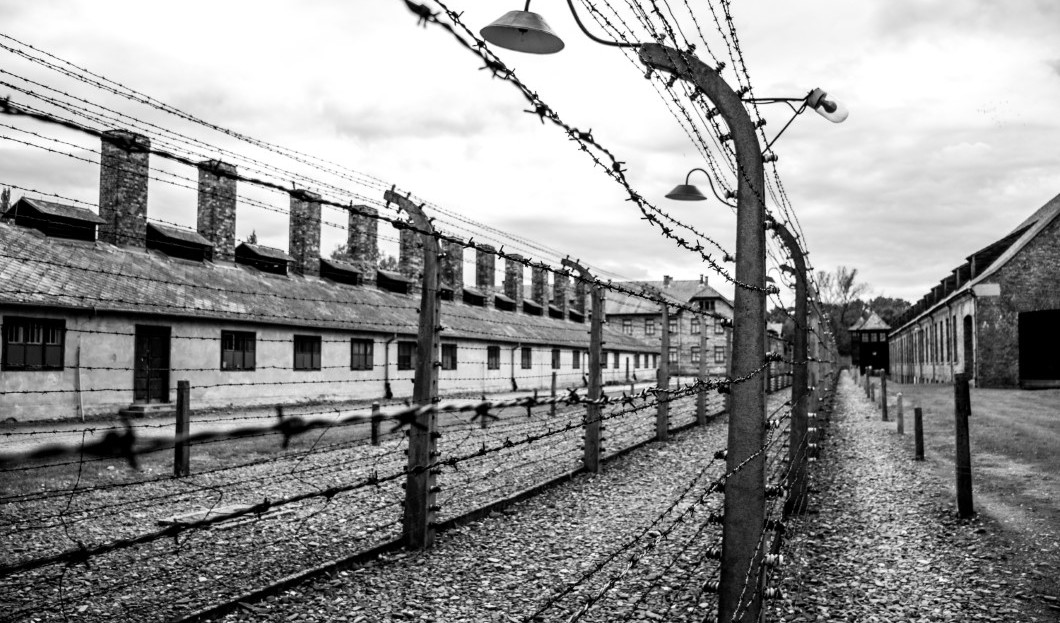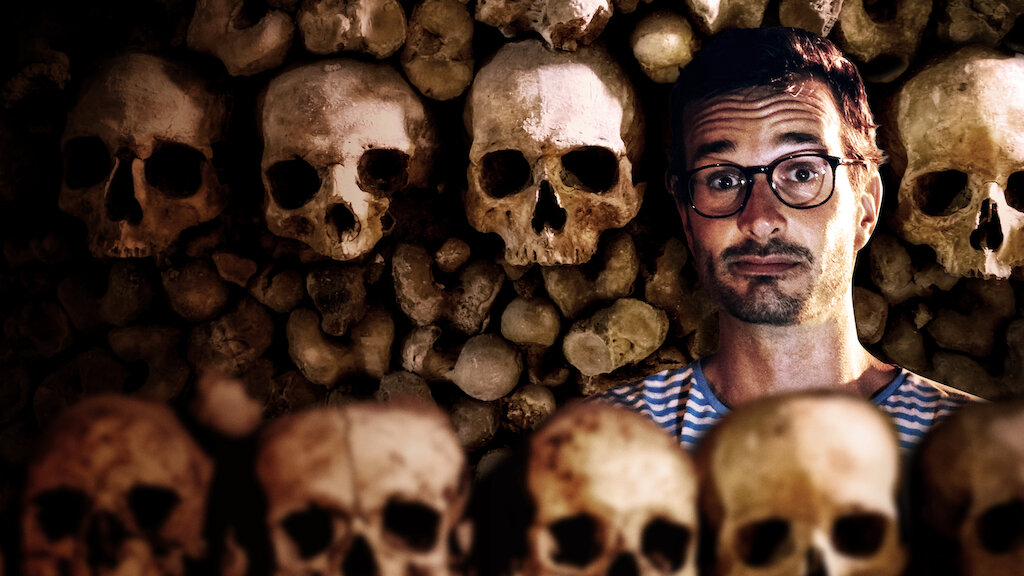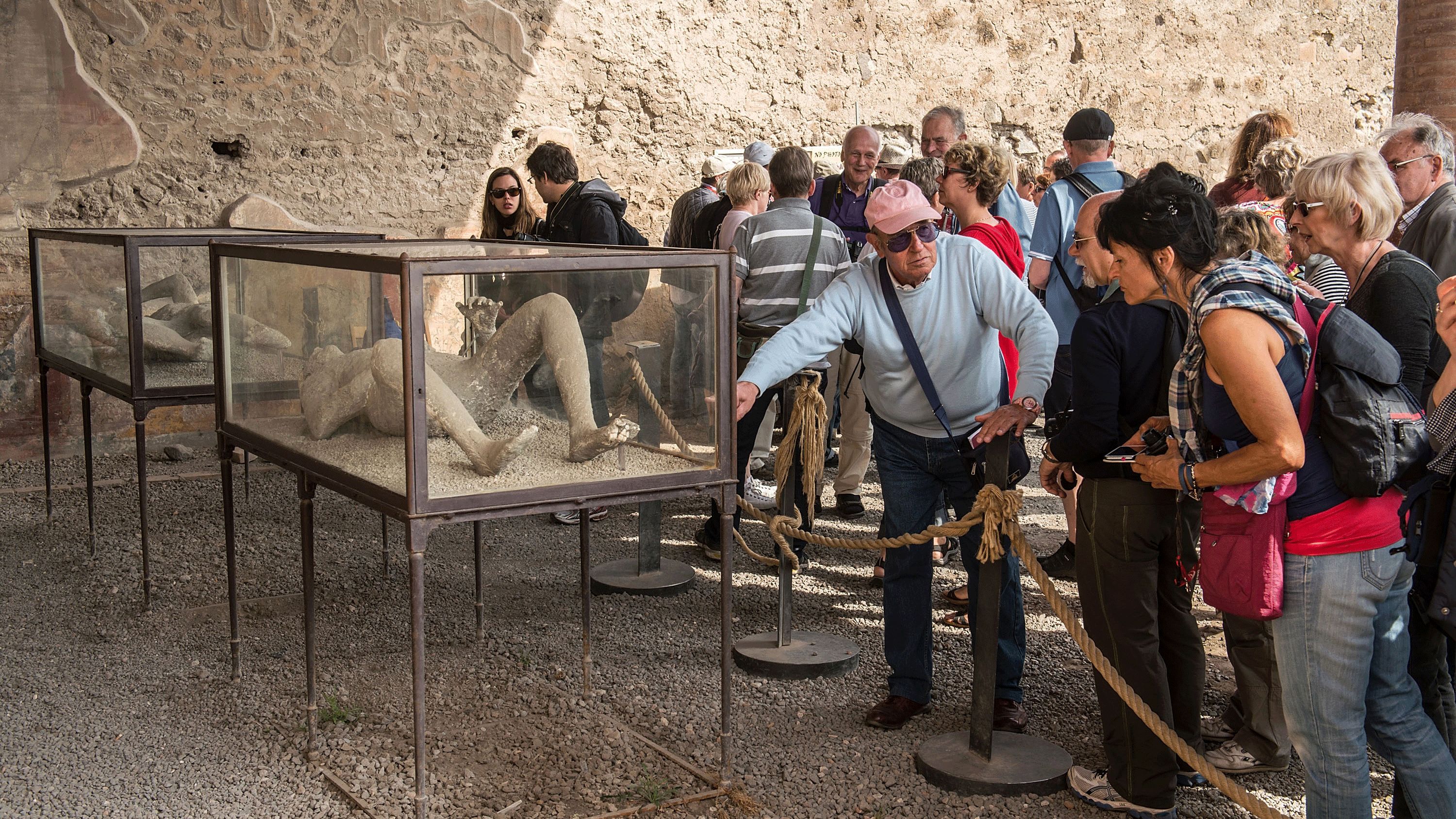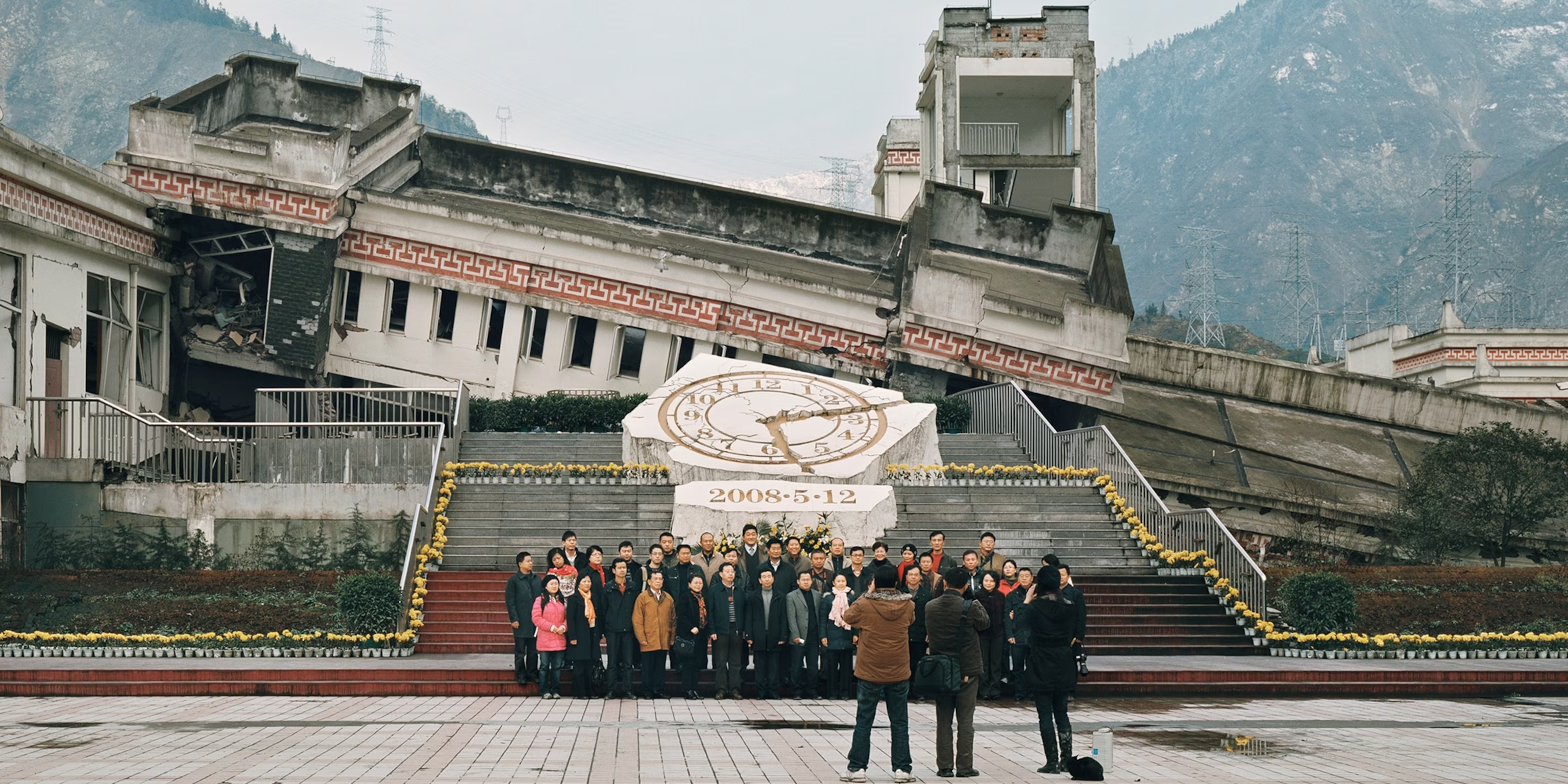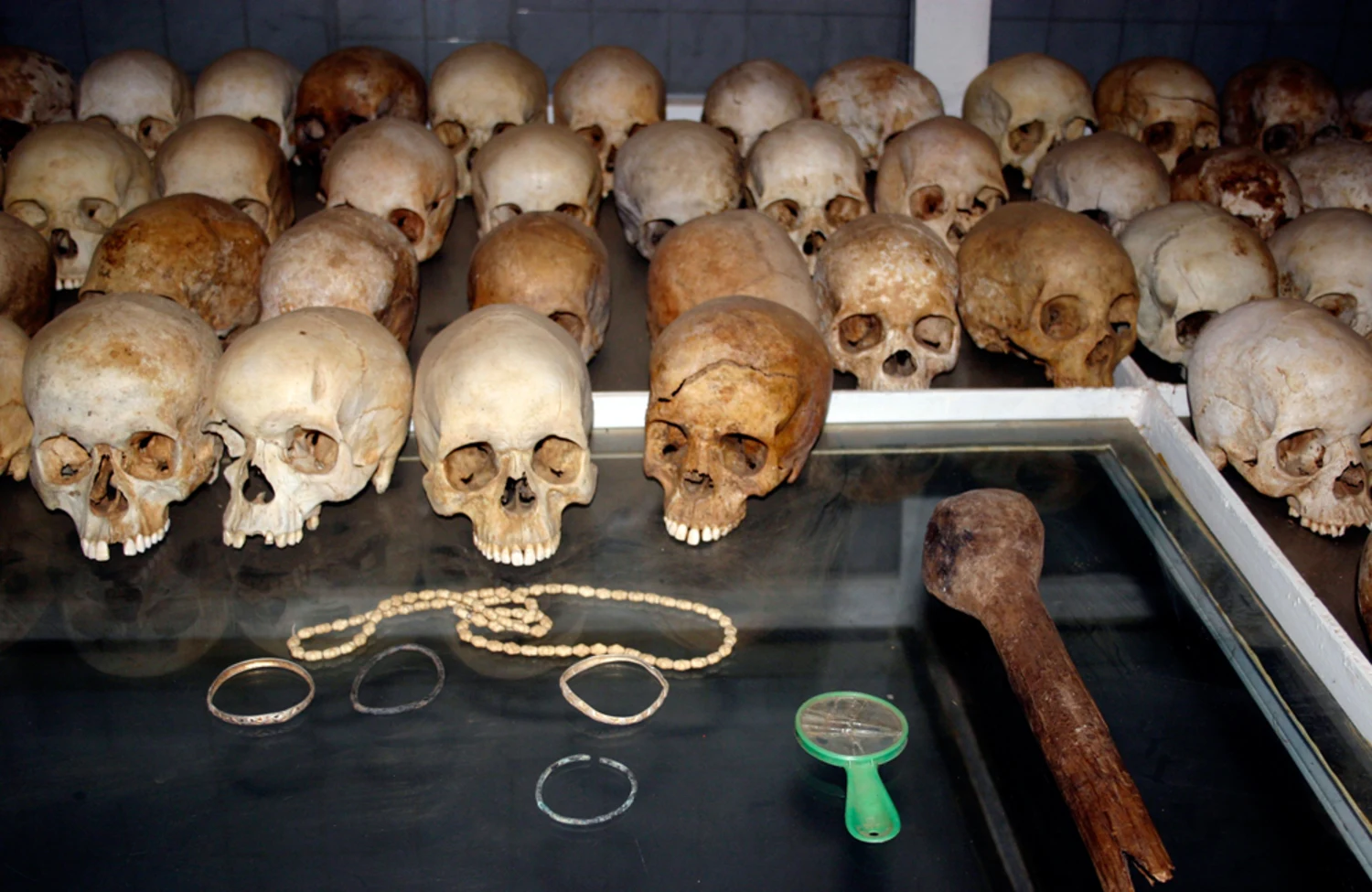Dark Tourism And Media Representation
This article delves into the intricate relationship between dark tourism and media representation, examining how the media influences the choices of travelers and the implications for the communities hosting these sites.
Author:Andrew StevensonReviewer:Johnathan MillerMar 17, 20255.7K Shares179.3K Views
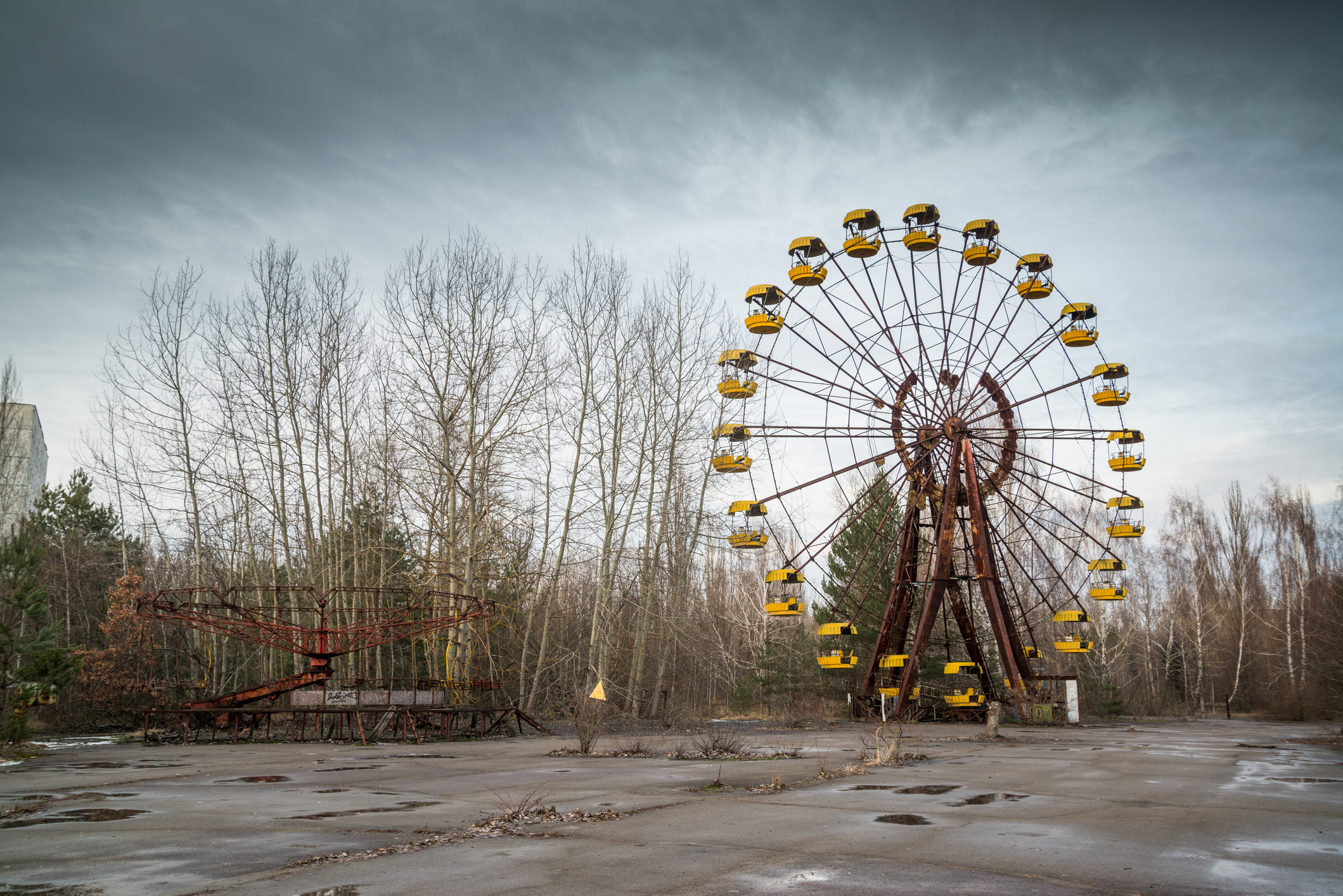
Dark tourism, a unique niche in the travel industry, revolves around sites that have witnessed historical tragedies, disasters, or atrocities. These destinations, which include historical battlefields, disaster areas, and sites of human suffering, draw curious travelers seeking a deeper understanding of the darker aspects of humanity's past. In recent years, the media's portrayal of dark tourism sites has played a pivotal role in shaping public perception, influencing visitor numbers, and impacting local communities.
This article delves into the intricate relationship between dark tourism and media representation, examining how the media influences the choices of travelers and the implications for the communities hosting these sites.
Unveiling The Depths Of Dark Tourism - A Journey Into History's Tragic Echoes
Before we embark on unraveling the intricate relationship between dark tourism and media representation, it is crucial to delve deeper into the essence of dark tourism itself. Known by various names such as thanatourism or grief tourism, dark tourism encompasses the poignant act of visiting places intertwined with death, tragedy, or significant historical events. These sites stand as silent witnesses, immortalizing the human experience, inviting visitors to step into the annals of history and contemplate the profound impact of these events on society.
Every year, millions of intrepid travelers from across the globe embark on a unique voyage—one that takes them to some of the unhappiest places on Earth. These destinations, marred by atrocities, accidents, natural disasters, or infamous deaths, have become the focal point of their vacations. From the haunting grounds of Auschwitz to the eerie remnants of Chernobyl, the hallowed fields of Gettysburg, the site of the Kennedy assassination, and the somber serenity of the 9/11 Memorial in New York, these visitors willingly immerse themselves in the darkest chapters of human history. For them, these sites are not merely locations on a map; they are portals to the past, where the shadows of the past loom large, and the echoes of tragedy reverberate through time.
The Allure Of Dark Tourism - Exploring The Unexplored
Dark tourism, in its essence, is a testament to humanity's intrinsic curiosity and desire to understand the complexities of the human experience. It represents a collective yearning to comprehend the depths of human suffering, the resilience of the human spirit, and the profound impact of historical events on the course of civilization. For many travelers, the allure of dark tourism lies in the opportunity to confront the past head-on, to bear witness to the scars that history has left behind, and to pay homage to the lives lost in the pursuit of a better world.
These sites, marked by tragedy and loss, serve as powerful reminders of the fragility of life and the resilience of the human spirit. By stepping into the shoes of those who endured unimaginable hardships, visitors are confronted with the stark realities of the past. It is a transformative experience—one that fosters empathy, deepens understanding, and challenges preconceived notions. In the eerie silence of these sites, visitors find themselves engaged in a silent dialogue with history, pondering the profound questions that have shaped the course of humanity.
Media Portrayal Of Dark Tourism - Navigating The Thin Line Between Sensationalism And Sensitivity
1. Sensationalism Vs. Sensitivity - A Delicate Balancing Act
In the realm of dark tourism, media outlets find themselves treading a delicate tightrope between sensationalism and sensitivity. The allure of sensationalized narratives is undeniable—they captivate attention, fueling curiosity and drawing viewers into the macabre allure of these historical sites. However, this approach comes at a cost. Sensationalism often runs the risk of trivializing the profound historical significance of these places, overshadowing the genuine human suffering that occurred within their confines. When dark tourism sites are sensationalized, the very essence of their existence—a testament to the tragedies of the past—can be distorted, leaving visitors with a distorted perception of the events that unfolded.
Sensitive storytelling, on the other hand, embraces the responsibility of portraying these sites with the gravity they deserve. It involves weaving narratives that are not only informative but also empathetic, shedding light on the human stories that lie beneath the surface. By emphasizing the historical context and the human experiences associated with these sites, sensitive storytelling fosters empathy among the audience. It encourages viewers to view these locations not merely as attractions but as hallowed grounds, where the echoes of the past demand respect and contemplation. Sensitivity, therefore, becomes the compass guiding responsible media coverage, ensuring that the true essence of dark tourism is preserved and understood by all.
2. Documentaries And Film - Crafting Immersive Experiences
Documentaries and films stand as powerful mediums through which the world of dark tourism can be explored and understood. These cinematic creations offer viewers more than just a glimpse; they provide immersive experiences, allowing audiences to step into the shoes of those who once lived through these historical events. Through meticulous research, evocative storytelling, and visual artistry, documentaries and films transport viewers to the heart of these dark tourism sites.
By weaving together compelling narratives and striking visuals, filmmakers can evoke a spectrum of emotions—from sorrow and anguish to resilience and hope. These immersive experiences transcend the confines of the screen, leaving a lasting impact on the audience. As viewers are drawn into the narratives, they develop a deeper understanding of the historical events, their implications, and the enduring legacies they leave behind. The emotional connection fostered by these immersive experiences serves as a catalyst, inspiring viewers to venture beyond the virtual realm and visit these sites in person. Documentaries and films, therefore, play a pivotal role in raising awareness about dark tourism, encouraging respectful exploration, and ensuring that the stories of the past are told with the reverence they deserve.
A Chance To Reflect - The Complexities Of Ghost Tours In Dark Tourism
In the vast landscape of dark tourism, even seemingly lighthearted ventures like ghost tours carry profound dilemmas for tour operators. Andrea Janes, the insightful owner and founder of Boroughs of the Dead: Macabre New York City Walking Tours, stands at the intersection of entertainment and historical reflection, navigating the intricate nuances that define this unconventional form of tourism.
1. Balancing Entertainment And Respect
Ghost tours, often regarded as the lighter side of dark tourism, serve as a captivating blend of entertainment and historical exploration. These tours weave chilling tales of the supernatural with the historical backdrop of cities, inviting participants to immerse themselves in the eerie atmosphere of the past. However, for tour operators like Andrea Janes, striking the delicate balance between entertaining the audience and respecting the dignity of the departed is a moral imperative.
Entertainment undoubtedly plays a pivotal role in attracting tourists, but it must never come at the cost of trivializing the tragedies or the lives lost. Responsible ghost tours intertwine the thrill of storytelling with a deep sense of respect for the deceased, ensuring that the narratives shared are not distorted for mere shock value. Tour operators must approach their craft with sensitivity, acknowledging the real histories and emotions behind the ghostly tales they tell.
2. Educational Value In Entertainment
Despite the spectral allure, ghost tours possess significant educational value. By delving into the stories of the past, these tours offer participants a unique opportunity to reflect on historical events, societal norms, and the lives of people long gone. Tour operators like Andrea Janes have the power to transform these tours into platforms for learning, shedding light on the cultural, social, and architectural evolution of cities.
By infusing educational elements into their narratives, tour operators not only entertain but also enlighten their audiences. Ghost tours can become windows into the past, allowing participants to gain insights into the complexities of bygone eras. In doing so, these tours encourage reflection, empathy, and a deeper understanding of the human experiences that have shaped the cities we know today.
3. Preserving Cultural Heritage
Ghost tours, when approached responsibly, contribute to the preservation of cultural heritage. They transform forgotten stories and overlooked historical sites into engaging experiences, breathing life into the past. Tour operators become custodians of cultural narratives, ensuring that the memories of the past endure in the collective consciousness.
For operators like Andrea Janes, the challenge lies not only in captivating the audience but also in preserving the authenticity and integrity of the sites visited. By respecting the historical significance of locations and the memories they hold, ghost tours become a means of honoring the cultural heritage of communities, fostering a sense of pride among locals, and encouraging responsible tourism practices.
Impact On Local Communities - Navigating The Fine Line Between Prosperity And Preservation
1. Economic Boost - The Double-Edged Sword
The influx of tourists drawn to dark tourism sites can breathe new life into local economies. The surge in visitor numbers translates into economic prosperity for the communities that host these historically significant places.
Local businesses thrive, hotels enjoy higher occupancy rates, and restaurants buzz with activity. The economic boost becomes a lifeline, injecting funds into infrastructure, public services, and community development initiatives. However, this boon comes with a caveat. Striking a delicate balance between reaping economic gains and preserving the site's historical and cultural integrity is paramount.
Overcommercialization can strip these places of their authenticity, turning them into mere tourist traps. Local communities must tread carefully, ensuring that economic benefits do not erode the very essence that makes these sites significant.
2. Ethical Considerations - Respecting The Past, Protecting The Future
Media outlets bear the weighty responsibility of addressing the ethical considerations entwined with dark tourism. Sensationalized stories, though attention-grabbing, risk commodifying the suffering of the past, thereby disrespecting the memories of those who endured these tragedies. Responsible media representation becomes imperative, akin to weaving a tapestry that combines historical significance with human dignity.
Respectful storytelling involves delving into the past with sensitivity, acknowledging the pain while illuminating the courage and resilience of those affected. It means approaching the narratives with empathy, understanding the profound impact these events had on communities and individuals.
Responsible media outlets become custodians of the stories, ensuring that the historical context is preserved without compromising the dignity of the site and its connection to the local community. This ethical approach not only preserves the authenticity of the site but also fosters a sense of trust between tourists and the communities they visit.
It encourages responsible tourism, where visitors engage with the past respectfully, honoring the memories of the departed and supporting the local communities that preserve these significant sites.
Impact On Visitor Numbers - Nurturing Curiosity Into Enlightened Exploration
1. The Curiosity Factor - A Catalyst For Exploration
The allure of dark tourism is undeniably intertwined with human curiosity—a powerful force that propels travelers toward the unknown. Media coverage acts as a catalyst, stoking this curiosity and transforming it into a tangible desire to explore the enigmatic realms of historical significance.
Through gripping news articles, compelling documentaries, and captivating social media posts, the media weaves intriguing narratives around dark tourism sites. These stories, laden with historical weight and human emotion, capture the imagination of travelers, inspiring them to venture beyond the ordinary and delve into the extraordinary.
Curiosity, sparked by media representation, fuels the wanderlust of individuals, prompting them to include these haunting destinations in their travel itineraries. Travelers are drawn to the mysteries that shroud these sites, lured by the prospect of unraveling the secrets of the past. Media, with its storytelling prowess, acts as a virtual guide, enticing curious minds to embark on a journey of exploration, where history and mystery converge.
2. Educational Value - Transforming Visits Into Reverent Experiences
Responsible media coverage transcends mere curiosity; it transforms casual interest into informed exploration. By emphasizing the educational value of dark tourism, media outlets serve as educators, enlightening travelers about the profound historical significance etched into these sites. Informed narratives, backed by meticulous research, provide essential historical context, offering visitors a comprehensive understanding of the events that unfolded within these hallowed grounds.
When media outlets portray dark tourism sites as platforms for learning and reflection, they elevate these destinations beyond mere spectacles. Visitors, armed with knowledge and context, approach their visits with a sense of reverence and understanding.
They recognize these sites as more than just historical relics; they are classrooms where the lessons of the past come to life. Responsible media coverage encourages thoughtful engagement, fostering empathy for the lives touched by these events and prompting visitors to contemplate the broader implications of history.
Exploring The Depths Of Dark Tourism - Unraveling Its Diverse Facets
Dark tourism, a complex and multifaceted phenomenon, encompasses a wide array of sub-categories, each offering unique insights into the darkest corners of human history. As travelers seek to engage with the past in profound ways, these sub-categories provide avenues for exploration, contemplation, and understanding. Here are some of the most prominent and intriguing types of dark tourism, each shedding light on different aspects of the human experience:
1. Genocide Tourism - Confronting Mass Tragedies
Genocide tourism delves into the deliberate and systematic extermination of specific groups of people based on factors such as religion, ethnicity, race, or nationality. This form of dark tourism encapsulates some of the most horrific events in human history. Examples include the Holocaust in Europe, the Khmer Rouge regime in Cambodia, the Rwandan Hutu massacres, the Holodomor in Ukraine, the Armenian genocide in the Ottoman Empire, the Srebrenica massacre in Bosnia and Herzegovina, the Rohingya genocide in Myanmar, and the devastating massacres of Native Americans in the USA. Genocide tourism serves as a stark reminder of the depths of human cruelty, prompting visitors to reflect on the collective responsibility to prevent such atrocities from recurring.
2. Holocaust Tourism - Tracing The Footsteps Of Tragedy
A subset of genocide tourism, Holocaust tourism focuses specifically on sites associated with the Holocaust and Hitler's final solution. This category excludes World War II battlefield sites but encompasses locations like labor camps, concentration camps, mass graves, and museums such as the Anne Frank House. While the distinctions may sometimes blur, Holocaust tourism offers a profound exploration of the systematic persecution and extermination of millions of Jews and other marginalized groups during World War II. Sites like Lidice, a village razed by the Nazis as a reprisal, exemplify the complexities within Holocaust tourism. Such places serve as tangible reminders of the atrocities committed and stand as monuments to the resilience of the human spirit in the face of unimaginable suffering.
3. Disaster Tourism - Facing The Forces Of Nature
Disaster tourism centers on locations marred by natural calamities, where the destructive power of nature has left enduring scars on the landscape. From earthquake-stricken cities to areas ravaged by tsunamis or volcanic eruptions, disaster tourism allows visitors to witness the raw aftermath of nature's fury. This form of dark tourism encourages contemplation of the unpredictable forces shaping our world and underscores the importance of disaster preparedness and resilience in vulnerable communities.
4. War Tourism - Exploring The Impact Of Conflict
War tourism immerses travelers in the remnants of past conflicts, providing a glimpse into the devastating impact of war on societies and landscapes. This category encompasses sites such as war memorials, battlefields, military museums, and war-related monuments. War tourism allows visitors to grasp the sacrifices made by soldiers and civilians alike, fostering a deeper understanding of the complexities of war, its causes, and its far-reaching consequences.
5. Criminal Tourism - Examining Notorious Acts
Criminal tourism invites visitors to explore sites associated with notorious criminal activities, including locations linked to serial killers, gangster activities, infamous prisons, and high-profile criminal trials. This form of dark tourism delves into the darker aspects of human behavior, offering insights into the psyche of criminals and the societal factors that contribute to criminality. Criminal tourism prompts reflection on the pursuit of justice, the psychology of criminals, and the measures taken by societies to prevent and punish crime.
Dark Tourism - People Also Ask
What Is Dark Tourism With Example?
Dark tourism, also known as thanatourism or grief tourism, refers to the act of visiting places that are associated with death, tragedy, or significant historical events. These sites are often marked by suffering, atrocities, natural disasters, or other forms of human-made or natural destruction. Dark tourism allows visitors to engage with the darker aspects of human history, confronting the past and gaining a deeper understanding of the world's complexities.
Examples of dark tourism sites include:
- Auschwitz-Birkenau Concentration Camp, Poland:A site of immense historical significance, where visitors can learn about the Holocaust and the atrocities committed during World War II.
- Chernobyl Exclusion Zone, Ukraine:The site of the catastrophic Chernobyl nuclear disaster in 1986, offering a glimpse into the consequences of nuclear power gone wrong.
- Ground Zero, New York City:The location where the Twin Towers stood before the 9/11 terrorist attacks, serving as a memorial and museum to honor the victims of the tragedy.
- Killing Fields, Cambodia:Sites where mass killings occurred during the Khmer Rouge regime, providing visitors with insights into Cambodia's tragic past.
What Is The Idea Of Dark Tourism?
The idea behind dark tourism revolves around the exploration and contemplation of places associated with death, suffering, and historical tragedies. It aims to educate, raise awareness, and provoke contemplation about the darker chapters of human history. By visiting these sites, tourists are confronted with the harsh realities of the past, fostering empathy, understanding, and sometimes a sense of activism towards preventing similar occurrences in the future.
Why Do People Visit Dark Tourism?
eople visit dark tourism sites for various reasons, including:
- Educational Purposes:Dark tourism offers an opportunity to learn about historical events, atrocities, and their implications. It provides a firsthand experience that books or documentaries cannot convey.
- Cultural Understanding:Visiting sites associated with a nation's or community's collective memory fosters cultural understanding and empathy, allowing visitors to comprehend the historical context of a place.
- Commemoration and Remembrance:Some individuals visit dark tourism sites to pay respects to the victims, offering a form of commemoration and remembrance for those who suffered or lost their lives.
- Reflection and Contemplation:Dark tourism encourages self-reflection, prompting visitors to contemplate the complexities of human behavior, society, and the consequences of historical events.
- Curiosity and Interest:Some tourists are drawn by curiosity, fascinated by the human psyche's darker aspects and seeking a deeper understanding of the world's complexities.
For more travel insights and tips, you can explore Bugbog, a valuable resource for travelers exploring the Netherlandsand beyond.
Conclusion
As dark tourism continues to capture the interest of travelers worldwide, the media plays a crucial role in shaping public perception and influencing visitor numbers.
By presenting these sites with sensitivity, respect, and a focus on education, media outlets can contribute positively to the preservation of historical and cultural heritage. Responsible media representation not only attracts curious travelers but also ensures that local communities benefit economically while preserving the dignity of their past. As travelers, it is our responsibility to engage with dark tourism sites respectfully, honoring the stories they tell and the lessons they impart about the complexities of human history.
Jump to
Unveiling The Depths Of Dark Tourism - A Journey Into History's Tragic Echoes
Media Portrayal Of Dark Tourism - Navigating The Thin Line Between Sensationalism And Sensitivity
A Chance To Reflect - The Complexities Of Ghost Tours In Dark Tourism
Impact On Local Communities - Navigating The Fine Line Between Prosperity And Preservation
Impact On Visitor Numbers - Nurturing Curiosity Into Enlightened Exploration
Exploring The Depths Of Dark Tourism - Unraveling Its Diverse Facets
Dark Tourism - People Also Ask
Conclusion

Andrew Stevenson
Author
Meet Andrew Stevenson, a distinguished male writer whose passion and expertise encompass a wide array of topics, including global news, finance, health, celebrity culture, movies, and cryptocurrency. With a wealth of experience and a keen eye for detail, Andrew delivers engaging and informative content that resonates with readers from all walks of life. His insightful analysis of market trends, health breakthroughs, and the latest developments in entertainment captivates audiences, while his exploration of the burgeoning world of cryptocurrency offers invaluable insights into this rapidly evolving field. Andrew's commitment to excellence and his ability to distill complex information into accessible narratives make him a trusted source of knowledge and inspiration in today's dynamic media landscape. Join him on a journey of discovery as he illuminates the intersections of culture, finance, and technology, shaping the conversation one article at a time.

Johnathan Miller
Reviewer
Meet Johnathan Miller, an esteemed writer and analyst renowned for his expertise in global news, finance, health, and cryptocurrency. With a distinguished background in finance and a meticulous approach to research, Johnathan offers incisive insights into market dynamics and economic trends. His articles are characterized by a profound understanding of health-related issues and a clear articulation of the complexities surrounding cryptocurrency. Through his professional lens and commitment to excellence, Johnathan navigates the intricate webs of our interconnected world, delivering compelling analysis and thought-provoking commentary. Join him on a journey of discovery and enlightenment as he continues to shape discourse in these vital spheres.
Latest Articles
Popular Articles
